The Sempervivum heuffelii is a unique cactus that was originally native to the Carpathians in Europe. However, it now grows very easily in many parts of North America. It is a perennial plant and will live for many years. However, these succulents are semelparous, so each plant will only have one flowering cycle.
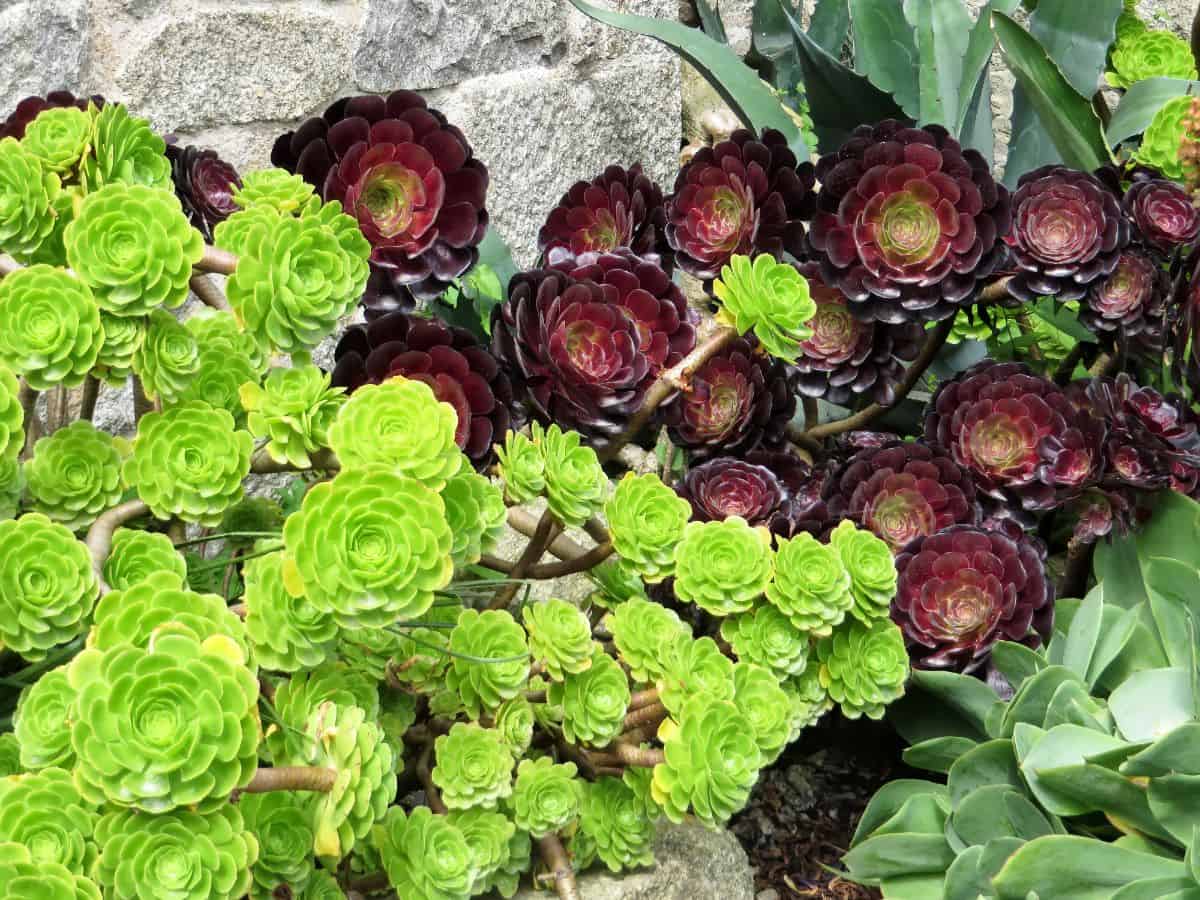
The Sempervivum heuffelii has earned the nickname of Hen and chicks, because the mother plant develops new plants that gather around the original rosette, like chicks around their mother hen.
The Sempervivum heuffelii is seldom found in nurseries and gardening stores, but it is very easy to grow if you have a mother plant.
This cold-hardy succulent will give a magnificent year-round show. The plant comes in many different colors. The varied colors are quite exquisite, and the plant will retain its vibrant color throughout the different seasons.
Jump to:
Sempervivum Heuffelii Appearance
| Name: | Sempervivum heuffelii |
| Soil: | Sandy soil with good drainage |
| Blooming: | Spring and summer |
| Light: | Full sun partial shade |
| Water: | When the soil is completely dry |
| Propagation: | Offsets, cuttings |
The Sempervivum heuffelii can be found in a wide range of colors, from orange to red to purple to greenish-blue. Even though they are a summer-growing plant and are dormant in winter, they do not lose their color during the winter months. This is quite unusual.
The leaves of the Sempervivum heuffelii grow into round rosettes, with new leaves emerging from the center. These succulents are highly unusual in the way that they spread. They will reach an average height of 8 inches.
New rosettes tend to grow within the center of the original rosette on the mother plant. One rosette can give rise to as many as 3 or 4 new rosettes, which clump together. These new rosettes can be used for propagating new plants.
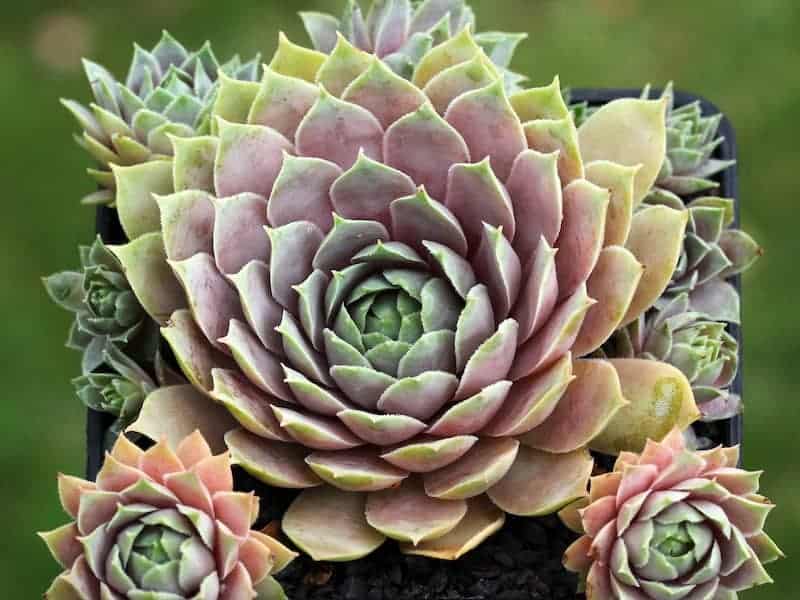
Buy it from:
The leaves njTzsAovjKchave a fine coating of cilia, which are very fine filaments that look like hairs. This hairy coating protects the plant from the elements, making it resistant to both extreme heat and cold. They also give the leaves a silvery, shiny appearance.
It takes a few years for each rosette to bloom. When it does, it produces a little yellow flower that will be about 2 inches in diameter and consists of 6-7 petals. When the flower dies, that rosette will die off and the surrounding rosettes will take its place.
Caring for the Sempervivum Heuffelii
The Sempervivum heuffelii is a relatively easy plant to cultivate. It does not need a lot of attention from you.
Light
No products found.
The Sempervivum heuffelii will thrive in full sun to partial shade. They need a lot of sunlight to bring out their best display of color.
When planting them outdoors, choose a spot that gets a minimum of 6 hours of direct sunlight. Some dappled shade will help to protect them from excessive heat.
If you want to keep your Sempervivum heuffelii indoors, it will be happiest in a south-facing room, on a windowsill with full sun.
If you do not have a room with sufficient natural light, it is still possible to cultivate the Sempervivum heuffelii indoors. You will need a grow light, to provide artificial light that serves the same purpose as natural sunlight.
Water
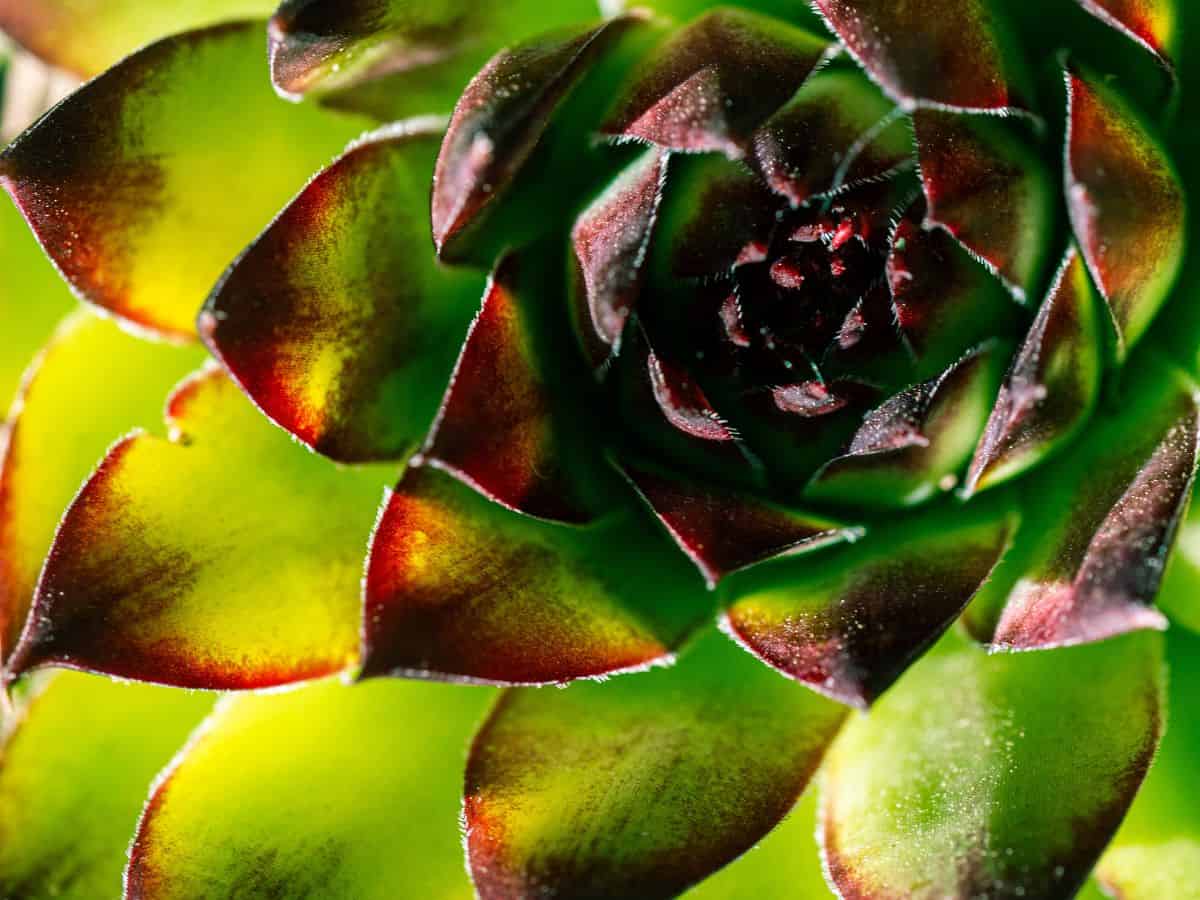
The Sempervivum heuffelii does not need much water. It is best to water deeply, in order to give the soil a thorough soaking. But this should not be done too frequently, to allow the soil to dry completely in between watering sessions.
This succulent does very well in containers, but it is important to have good drainage holes at the bottom of the container, to allow excess water to run off freely.
When your plant is still new and very small, water it 2-3 times per week, in order to help it get going. Once you have an established plant, this can be reduced to once a week during summer, and only every 2-3 weeks in winter.
If the weather is extremely cold and the temperature drops below freezing, the plant should not be watered at all. Overwatering can cause severe damage to the plant’s delicate roots.
See Related Topic: Tugela Cliff-Kalanchoe (Kalanchoe Longiflora Coccinea) - A Care Guide
Temperature
The Sempervivum heuffelii is unlike many other succulents in its ability to withstand extreme temperatures. While most succulents will not survive in temperatures below 20° Fahrenheit, the Sempervivum heuffelii can tolerate extremely cold conditions, even with temperatures below freezing.
Snow will not harm your Sempervivum heuffelii, and even if it is covered with snow, it should bounce back and recover quickly once the snow melts and the weather warms up.
However, if your plants are in containers that are left standing in residual water for extended periods, the roots will start to rot. These containers should be moved to a dry position.
Similarly, the Sempervivum heuffelii is highly adaptable to different conditions and can survive in an extremely hot climate. This makes it suitable for a wide range of weather conditions.
Because it is so hardy, the Sempervivum heuffelii is a highly versatile succulent that is ideal for cultivating in most agricultural zones across the United States.
Soil
The Sempervivum heuffelii needs sandy soil with good drainage. The soil should not be too thick and heavy. It should be made up of a mixture of cactus potting soil and mineral grit, such as coarse sand, perlite, or pumice, or even a blend of all three.
These elements of the soil should be combined in a ratio of 50% potting soil, to 50% mineral grit. This will allow for sufficient drainage.
While it is generally not necessary to add fertilizer to the soil for Sempervivum heuffelii if you want to try to accelerate growth you can add a small amount of fertilizer during the growing season. This will help to add nutrients to the soil and encourage healthy roots in the plant.
Propagating the Sempervivum Heuffelii
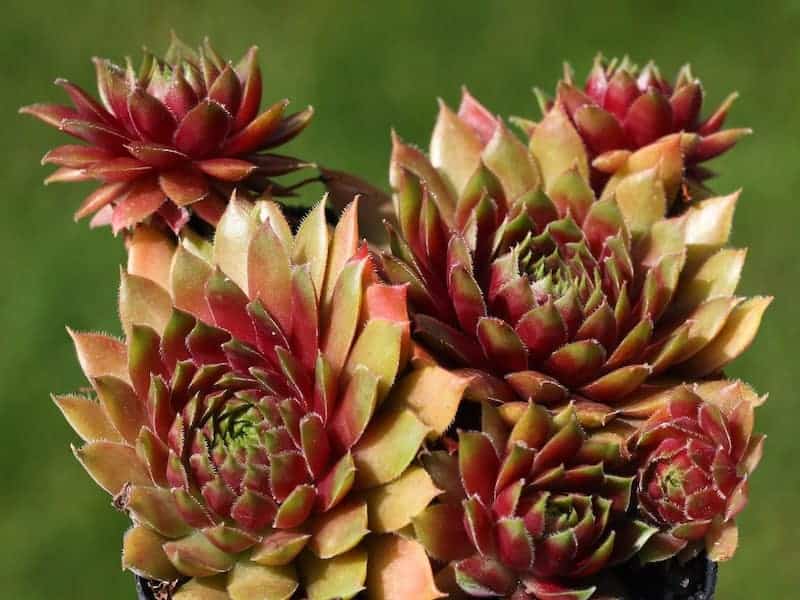
The Sempervivum heuffelii is one of the easiest succulents to propagate, because of its unique rosettes. It essentially self-propagates, by developing new rosettes as new leaves grow.
To cultivate a new plant, you need to remove one of the new rosettes that have formed. Carefully cut it away from the mother plant, using a clean, very sharp knife. Make sure that you also remove some of the roots.
Leave it to stand for 2-3 days to dry out, and then replant it in a separate pot. Water it lightly every few days at first, and it will soon take root and develop into a viable plant. You can then reduce the watering frequency.
Each rosette that you remove can also be cut in half, or even into quarters if it is a large rosette. Make sure that each piece has a few roots. These pieces can then be replanted, and each one will eventually regenerate into a whole new plant.
Read Related Topic: Woolly Senecio (Senecio Scaposus) Succulent Care Guide
Common Problems and Pests
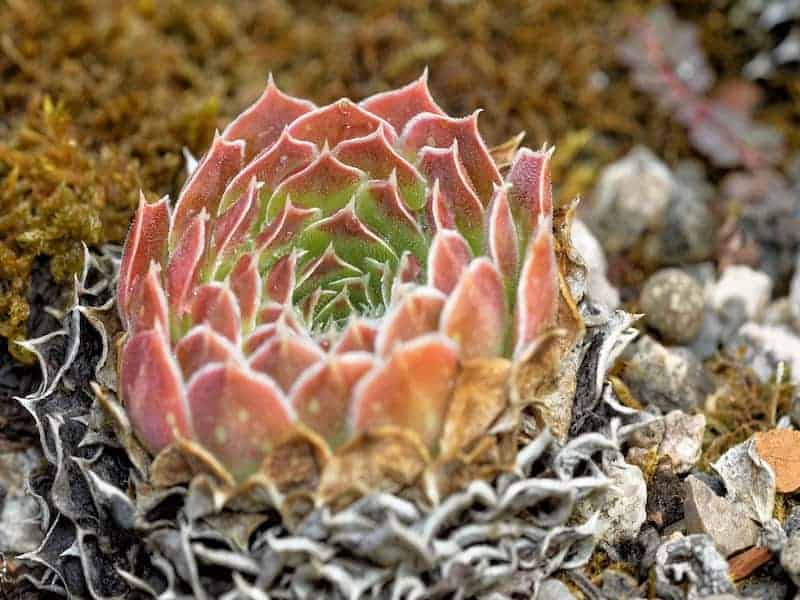
The Sempervivum heuffelii is a popular host for two bugs, namely aphids and vine weevils. These are both highly destructive and will devour your plant if they are left to multiply. The only way to eliminate them effectively is by using a chemical pesticide.
One of the most difficult problems to eradicate in indoor Sempervivum heuffelii is gray mold. This occurs when the plant does not have enough air circulating around it. It is necessary to remove all of the affected leaves and stems and place the plant in an area where it will get more fresh air.
When removing the affected leaves, it is crucial to ensure that absolutely no trace of mold remains on the plant. If there is even a tiny spot left, it will soon start to spread again.
Sources:
https://worldofsucculents.com/sempervivum-heuffelii-jobs-beard/


